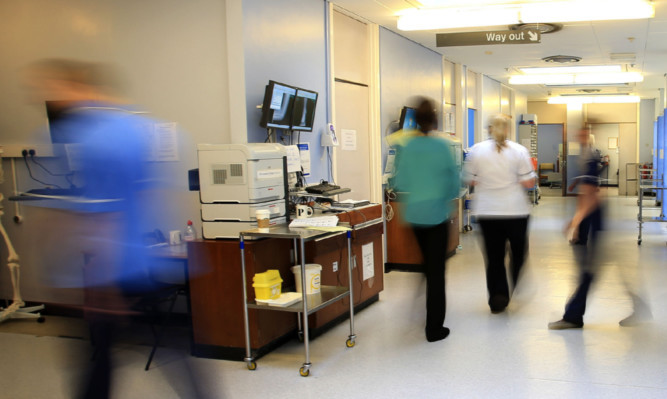NHS Tayside has been accused of handling taxpayers’ money irresponsibly after it emerged that the cash-strapped health board was responsible for almost a fifth of the nation’s spend on agency nursing and midwifery staff.
The revelations came as part of Audit Scotland’s recent report on NHS performance across the country.
NHS Tayside is named as having recruited 18.8% of Scotland’s temporary midwives and nurses despite only representing 7.7% of the national population making it the second largest employer of such workers in the country.
It was also revealed the number of hours worked by agency staff in the health board has more than doubled in the past 12 months from 24,724 in 2013/2014 to 69,689 in 2014/2015.
According to Audit Scotland, Scottish health boards are hiring more expensive temporary agency workers in the wake of increasing challenges surrounding the recruitment and retention of medical staff.
This is despite the auditor revealing that recruiting agency workers costs the taxpayer almost three times the cost of recruiting the average NHS bank support worker.
A spokesman for Audit Scotland said: “Together, the Scottish Government and NHS boards should address the comparatively high costs of using agency staff and encourage greater use of internal or bank staff, or national contracts where temporary staffing is required.
“Using agency nursing and midwifery staff costs the NHS almost three times more than using NHS bank staff.
“In 2014/15, the average hourly cost of using agency nursing and midwifery staff increased by nine per cent to £42.97 from £39.26 in 2013/14.
“In comparison, in 2014/15, NHS bank staff for nursing and midwifery was £15.62 an hour, a decrease of just under one per cent.”
The figures come just months after NHS Tayside was granted a £14.2 million Scottish Government bailout a large percentage of which was used to pay for “overspends in workforce costs.”
The Courier reported in January that high-level staff posts at NHS Tayside had lain vacant for years, with the health board unable to secure full-time staff.
North East Labour MSP Jenny Marra slammed the health board and accused them of asking the Scottish Government for financial help despite employing more agency staff than most health boards in the country.
She said: “NHS Tayside is relying on agency staff and this is costing them a fortune.
“They are filling 10 times as many nursing hours with agency staff than they were just four years ago.
“At the same time, they are selling off hospital buildings and going cap in hand to the Scottish Government for loans just to balance the books.”
Eben Wilson from campaign group Taxpayer Scotland argued: “To be using so many expensive agency staff in this context is to show that they are incapable of using taxpayers’ money efficiently.”
A spokesman for NHS Tayside said: “NHS Tayside has a proactive approach to reducing reliance on nursing agency cover.
“We continue to actively recruit to both our full and part-time positions and to our nurse bank to reduce our use of agency staff.”
Health Secretary Shona Robison said: “The use of bank and agency staff allows NHS boards to respond to periods of planned and unplanned absence including long term sickness, unexpected vacancies and maternity and paternity leave which ensures service continuity during these times.”
